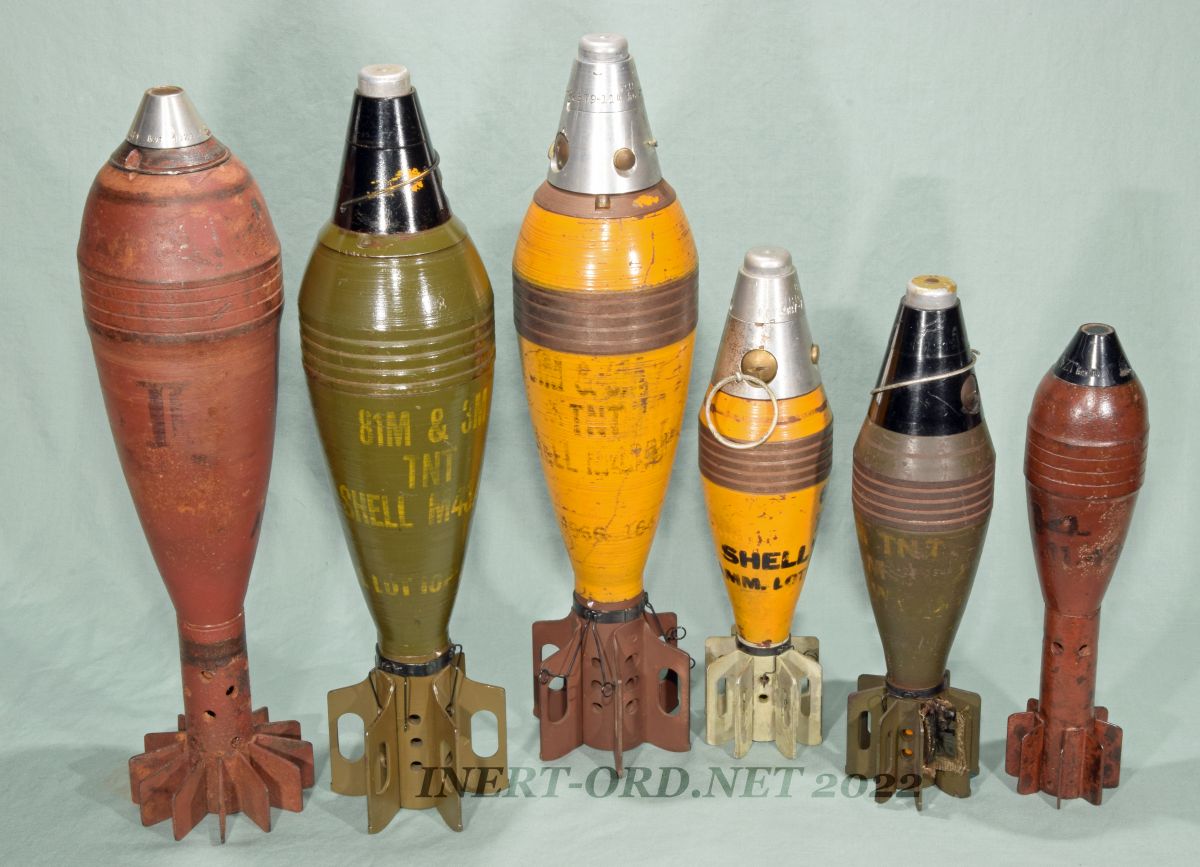|

|
During the same time frame as the color scheme change, the safety pin changed for the M52 fuze.
The first version, referred to as the "cotter pin" style, uses a standard hand grenade pin ring with an extra-long pin.
It extends completely through the fuze body.
In what appears to be a cost/time-saving effort, the ring/pin assembly was re-designed, becoming a single formed "safety wire", wrapped around
the fuze nose and held in position under spring tension.
The pin hole in the fuze body was shortened (eliminating a deep drilling process) and now only accessible from one side.
On these examples, both aluminum fuzes are marked "M52" with no apparent differentiation between the two styles.
|
|
 |
This round came from the estate of a CPA who did an audit of Mechanical Manufacturing Co., Ft Worth, Texas, for a pricing contract for "shells" and "adapters", May 31, 1945.
(The round came with a copy of the document.)
This might have been a first article, for examination or something along those lines.
The all plastic and plastic hybrid versions of the M52 Fuze appear to have been phased out after WWII. This could be an early design change back to aluminum?
The fuze appears to be an all aluminum "hybrid", where the top section is a different alloy. The nose plunger is steel, not aluminum as in typical WWII M52 examples. (This fuze is featured earlier in this article.)
Fuze is stamped "L.M.C.", no date or model.
Body marked: LOT MM-29-1945-81MM-M43A1.
Would assume the "MM" stands for Mechanical Manufacturing Co.
Per the contract proposal the prices were:
$0.313 per shell, $0.0698 per adapter; for 150,000 pieces each.
|


